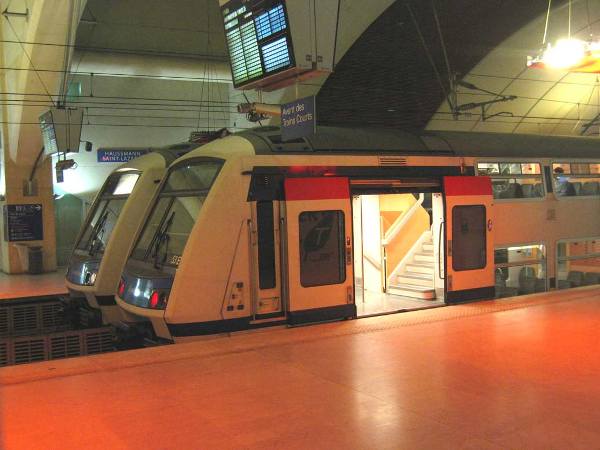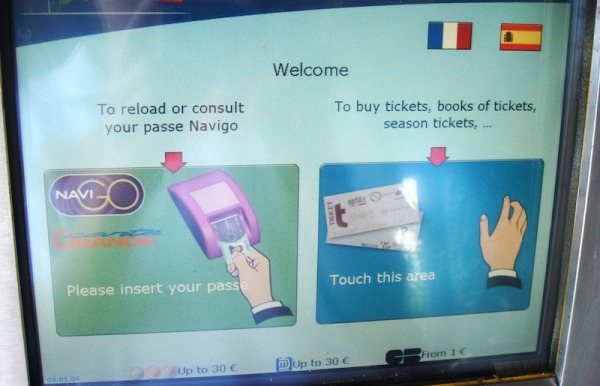Most tourists spend too much money on transportation. But we need only understand the local rules, and it turns out that you can save considerably. Today we’ll show you how to use public transport in Paris.
Public transport
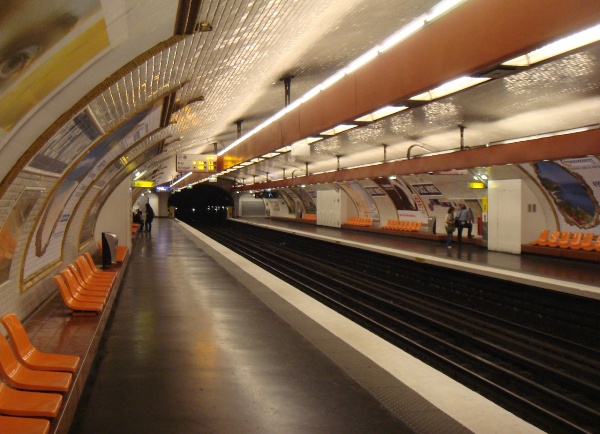
The easiest way to navigate the city is by subway, since the Paris subway, one of the most extensive in the world. In the diagram, Metro of the French capital has 14 lines, numbered and distinguished by color. The stations are open from 5.30 am until after midnight. The distance between stops is so small that often, standing on one platform, you can see previous and subsequent stations.
First, navigate the subway is not easy. The name of the last station is being written on the branch as a pointer. Therefore, in order not to stray into long and narrow passages of the labyrinth of the Paris metro and immediately determine in which direction to turn, remember not only the desired transfer station, but the final line.
The network of 5 branches of RER suburban EMUs also permeate the city, sometimes duplicated subway stretch far out of the city. Unlike metro lines RER line on the map is fatter; instead of the numbers it has marks with the letters of the alphabet. You can use RER if you decided to go to the suburbs, to visit Versailles or Disneyland.
Buses only complement the metro and RER, and are much less popular, but usually they go strictly according to schedule (of course, in those moments when no one is on strike).
Zones
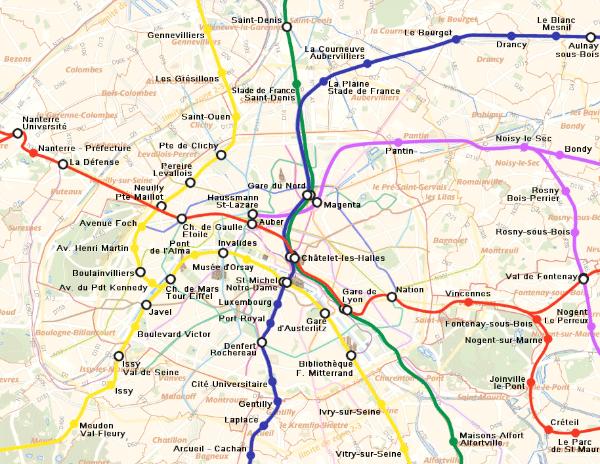
8 tariff rings include Paris and reaches for its most distant suburbs. If you are interested only in the capital, you do not leave the limits of 1-2 zones. In zone 3 are nearer suburbs of Saint-Denis and Vincennes. Charles de Gaulle and Orly airports, as well as Versailles and Disneyland – that’s 4-5 zones. Next 5-th zone most tourists usually do nothing. If you decide to close the office to admire the skyscrapers of La Défense and walk on its hypermarkets, you should know: the RER is considered the outskirts of Paris and 3rd zone, and for the subway – 2. It will be very easy to navigate if you have iphone 4s
Tickets
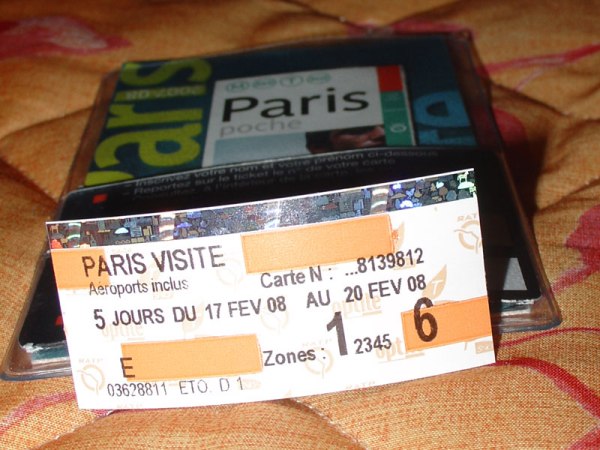
One ticket for zones 1-2 costs 1,6 euros. On it you can travel on all modes of transport, including the funicular to Montmartre. You may make an unlimited number of transfers to the metro and RER within Paris, and also to change coaches during a half hour. But the change from bus to subway can not take place! A ticket purchased from the bus driver, will cost 1,7 euro, but the transplant is still not allowed.
If you are going from time to time to ride the subway and buses, it is better to buy a “little book” of 10 tickets for 11,6 euros. Just do not wear it in his pocket next to the mobile, because these tickets degauss very quickly. However, this problem is known to all, and so you can easily exchange the unused, but already worthless tickets in the cash office of any of the metro stations.
If you need to rapidly move to Paris for only 1 day, then it is better to buy a ticket Mobilis, valid on all modes of transport from 5.30 until one o’clock: 5,9 euro zone 1-2, 7,9 euro zone 1-3, 13, 2 euros for zones 1-5, etc.
Intend to stay in Paris a week? Then it is better to buy Navigo. There are many variants of this travel. For example, it will cost 17.2 euros for Navigo zones 1-2, 22.7 euros for zones 1-3, 33.4 euros for zones 1-5. Also you have to put 5 euros for the card itself. But you can use it when you arrive to Paris next time. Unfortunately, this travel is designed more for the Parisians, not tourists: it does not act on the purchase date and the calendar week: Monday to Sunday.
Tourists are offered a disadvantageous ParisVisite, which operates from any day of the week. It can be bought for 1, 2, 3, 5 days at 1-3 or 1-6 zone. It is significantly more expensive than the Navigo, although provides some discounts for particularly frequently used restaurants and minor museums. For example, the cost for 1 day: 9 euros for 1-3 zone, 18.9 euros for 1-6 zone. In 3 days it costs 20 euros for zones 1-3 and 40,50 for 1-6 zone. Such a ticket for 5 days worth 28.9 euros for zones 1-3 and 49.40 for 5 zones.
Planning spree around Paris until late at night? No problem! To get to the house from 0.30 to 5.30 you will need to get the help of the night buses. Within a single zone will require a standard ticket, if on, will have to punch a ticket, depending on the route. All tickets can be purchased from vending machines and ticket offices at metro stations and the RER, as well as some bus stops.
Bikes
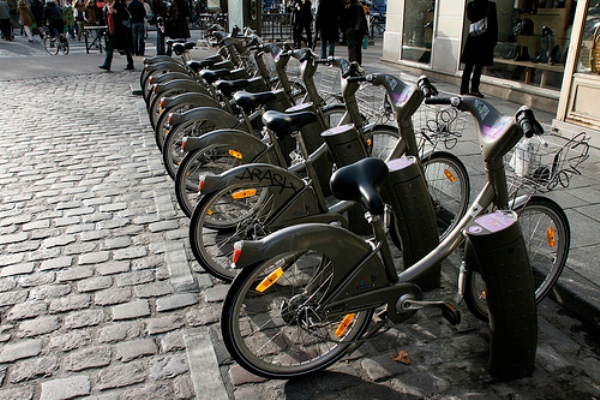
For several years, bicycles have become a good alternative to cars that stand in traffic and are almost impossible to find parking. Across town, about 300 meters away from each other, auto rental Vélib ‘with the thousands of bicycles are scattered. Alas, so much liked by the Parisians and tourists system, it is under threat of closure. The Handling Vélib ‘company is suffering huge losses because of the vandals. But while these rentals still exist, try to use them.
Owners of the iPhone through App Store can download a free application that helps you plan routes, find location of stations hire, check on for free bikes and get a lot of other useful information.
Taxis
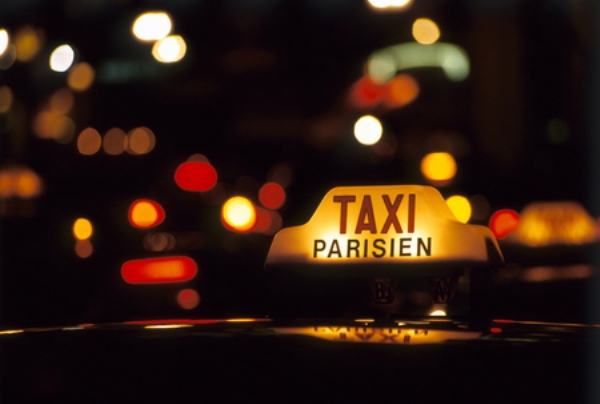
Taxis can be stopped with the show of a hand. Passengers are placed only on the back seat. The fare is being charged by the meter. The standard rate is as follows: 2,2 euros “falls” in the account immediately after landing (if you take a taxi at a special parking lot or at the airport, you have to pay even more about the euro), then – .89 cents per mile in the city and in the immediate suburbs. From 19 pm to 7 am and on weekends and public holidays and the day in airports per kilometer will have to pay 1,14 euros.
Thus, at the lowest tariff across the city it will cost around 12 euros. Even the order of 1 euro will have to be paid for each bag in the trunk. When traveling to distant suburbs and night trips to the airport you will be applied to the third rate – 1,38 euro per kilometer. Taxi drivers usually tip around 5-10% of the invoice.
